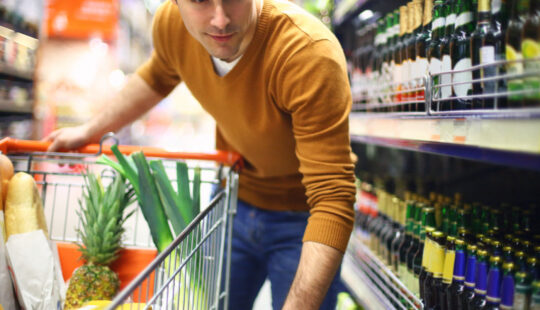Organic eggs at my local supermarket are always sold out. Consumers clearly know what they want and are willing to pay for it. Shoppers nowadays implicitly trust food labels. But what about labels for other types of products, such as the steel frying pan to cook those eggs?
Steelmaking contributes 8% of the world’s greenhouse gas emissions, which means shifting consumer behaviour could be significant. Unfortunately, there are no sustainability labels for frying pans yet, not to mention more complex products like phones, or cars. However, the world is currently in a race of monumental proportions to bring exactly this type of information to the consumer’s fingertips.
This article explores the impact of this shift, as producers race to capture the market for sustainable products. It considers the implications of geopolitics, the significance of regulations and government incentives that are shaping the rules for product-related declarations. It also looks at the practical implications, of what businesses can do today to prepare for this shift.
The Chicken and Egg Problem
To make any claims about products, requires benchmarking and industry averages for comparison. It also requires clear standards and methods for data collection and calculation, with common reference points, so all stakeholders can make informed decisions. Transparency is needed beyond the operations of the producer of the final product, as every entity in the chain needs to contribute.
The question is where to start, from the final product and work backwards, or at the beginning of the chain? The Catena-X Automotive Alliance is a prime example that is driven from the end of the chain. The request for data is passed from the car makers to tier 1 suppliers, and so on, until it reaches the start of the chain. Eventually, regardless of if it is a frying pan or a car, the requests end up with the primary producers. This means that mining and metals represent the key to unlocking a future where consumers can make more sustainable product choices.
All the Eggs in One Basket?
Unlike eggs, minerals are not evenly distributed across the globe. Think of it as raisins sticking out of a fruit loaf. There are more raisins inside, but only a few are visible and accessible on the surface. When it comes to natural resources, only a small number of countries are at the heart of several critical global supply chains. The mining and metals industries are therefore currently facing a rising trend of resource nationalism, as countries seek to secure their access to critical resources and promote domestic production.
In addition, the processing of ore historically shifted to regions with emerging economies as companies tried to lower operating costs. These regions may not have strict regulations in place, or there could be issues with data availability and transparency. Significant investment, international co-operation, and potential adjustments to trade is needed to steer towards greater transparency.
Making Omelettes Means Breaking Eggs
Organic eggs have consumers’ trust now, but it required a grassroots transformation of the industry. That trust must still be earned for more complex products. Whether it is a car or a frying pan, it will be an iron marathon. This much is clear from the recent report from the International Energy Agency on Net Zero Iron and steel.
Governments do want to channel private and public spending towards meaningful and sustainable change, but it requires a fine balance to protect consumers along the way. Initiatives range from preventing greenwashing to new regulatory instruments to enforce change. Examples include:
- Tightening of consumer labels and standardisation of product-related claims:
- The US Green Guides and the EU’s Green Claims Directive for consumer products
- The EU’s Ecodesign for Sustainable Products Regulation
- Providing incentives to change:
- Public green procurement initiatives in the EU & US
- The US Inflation Reduction Act (IRA) and the EU’s Green Deal Industrial Plan
- Enforcing change and protecting interests with changing geopolitical dynamics:
- The EU’s CBAM regulation requires importers to disclose the embedded emissions
- The EU Critical Minerals Act aims to ensure continued access to critical raw materials
- Standardising data collection, calculation methods and reporting:
- The emissions intensity of products needs to be declared, per US SEC and EU CSRD
- Targets must follow sector-specific guidelines, such as the SBTi for Iron and Steel
The Goose that Lays the Golden Eggs
Business leaders are looking to capitalize on this emerging market. Their customers are demanding it. But there are several barriers when attempting to calculate product-related greenhouse gas emissions. Firstly, gathering data throughout the supply chain is challenging. Inconsistent methodologies and data quality further complicate the process. Finally, cost constraints may hinder businesses from investing in robust measurement and verification systems.
The good news is that businesses can already take steps today, and start making progress by using digital solutions. Find out how SAP can support businesses with Transforming Carbon Accounting Systems and specifically, how they support Steel producers to decarbonise.



